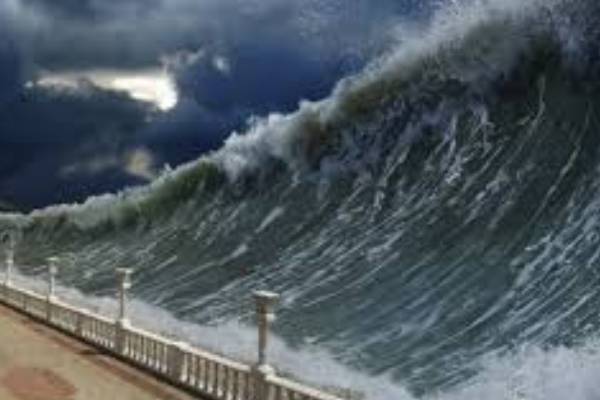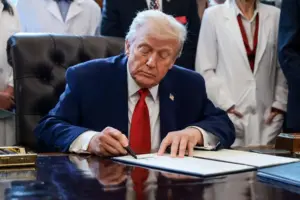Tsunami waves have struck parts of Russia, Japan, and the United States following a powerful 8.8-magnitude earthquake off Russia’s eastern coast — one of the strongest ever recorded in the region — prompting alerts across dozens of Pacific and Latin American nations.
The earthquake struck 136km east of Petropavlovsk-Kamchatsky in Russia’s far east early Wednesday, according to the US Geological Survey (USGS), triggering waves of up to four metres in the Kamchatka Peninsula’s North Kuril District.
Footage on Russian social media showed streets in the town of Severo-Kurilsk submerged, with residents fleeing to higher ground. Authorities have declared a state of emergency, and District Mayor Alexander Ovsyannikov said all residents had been safely evacuated to designated tsunami zones.
Sergei Lebedev, regional minister for emergency situations, confirmed the wave heights and said no fatalities had been reported. The regional health minister said several people were injured, but none seriously.
The US Tsunami Warning Centers warned that waves of up to three metres could impact Russia and Ecuador, with lower but potentially hazardous surges expected in Chile, Peru, Costa Rica, Japan, Hawaii, and several Pacific island nations. Tsunami warnings were issued for Hawaii, Alaska’s Aleutian Islands, and parts of California, with advisories extended to Oregon and Washington.
In Hawaii, local authorities ordered evacuations from vulnerable coastal areas. Governor Josh Green urged residents to remain alert, saying: “We are not yet in the clear… please do not put yourself in harm’s way.” Emergency responders, including Black Hawk helicopters and high-water vehicles, were placed on standby.
Although the Pacific Tsunami Warning Center said a major tsunami was not expected to strike Hawaii, residents reported traffic congestion as people fled urban areas for higher ground.
In California, tsunami waves were recorded in San Francisco shortly after 1am local time, according to the National Weather Service, with the wave continuing along the coast.
US President Donald Trump also urged Americans in affected areas to heed official advisories and updates.
In Japan, small tsunami waves — approximately 30cm high — reached Hokkaido Island on Wednesday morning. Prime Minister Shigeru Ishiba called for immediate evacuations in high-risk coastal areas, while disaster officials confirmed no reports of injuries or damage.
Neighbouring countries including the Philippines, Indonesia, and Taiwan were placed on alert, as waves were expected to arrive later in the day. The IMF separately warned that such seismic events could worsen global supply chain disruptions.
Japan was expected to “bear the brunt” of the tsunamis due to its proximity to the quake’s epicentre. Widespread alerts remain in effect across coastal regions of Hokkaido and Honshu.
The main quake was followed by powerful aftershocks, including tremors measuring 6.9 and 6.3 magnitude, according to the USGS. Experts warned that the risk of further tsunamis or coastal surges remains high.
“This is a serious event,” said Robert Weis, a tsunami specialist at Virginia Tech. “Given the size and location of the quake, damaging waves across a broad region are a real possibility.”
Authorities across the Pacific Rim continue to monitor developments closely, urging residents to follow official guidance and remain in safe zones until the threat has passed.





